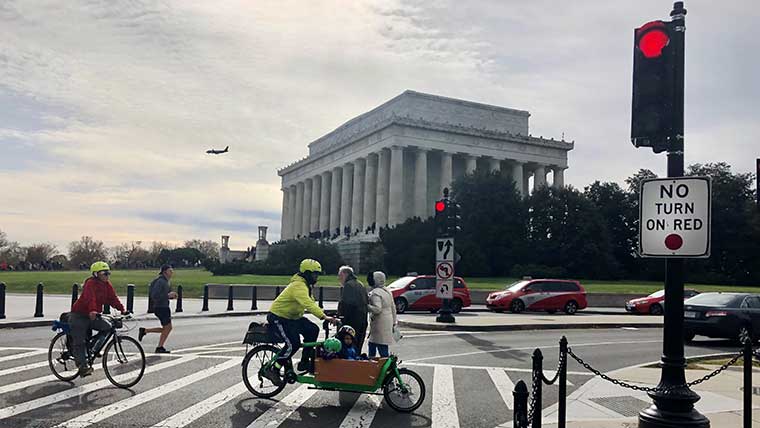Washington DC is working to become a more age-friendly city through, among other things, traffic signal timing treatments provided by Mead & Hunt. Age-friendly signal timing treatments take into consideration the specific pedestrian needs of an aging population. Some treatments to consider include:
Leading Pedestrian Intervals (LPIs)
LPIs provide a “head start” for pedestrians by displaying the WALK sign before vehicles are shown a green light. This is a proven tool to improve pedestrian safety by establishing pedestrians’ right-of-way within a crosswalk. Extended LPIs can be useful at locations near Age-Friendly destinations.
LPIs are evaluated based on 14 criteria, including (among others):
- Pedestrian-Vehicle conflicts
- Presence of Metro Station/Bus Stop, senior center, other Age-Friendly destination
- Presence of school zone
- Presence of sight obstruction
Automatic WALK Signals
There are two ways that DC operates pedestrian signals: Pretiming vs. Actuated Operation. With Actuated Operation, side street pedestrians are only served when a call is placed through push button activation. Pretiming, meanwhile, displays WALK signals every cycle, even if nobody pushes a button. This reduces variability by providing reliable, consistent pedestrian crossings. And this way, pedestrians never miss out on an opportunity to cross the street.
Increased Crossing Times
DDOT pedestrian timings are already compliant with Federal guidelines. However, at intersections near destinations frequented by older adults, our team is evaluating increasing Flashing Don’t Walk (FDW) Intervals. This would provide more time for pedestrians to safely cross and alert pedestrians when it’s no longer safe to begin crossing.
How we’re helping DC
Through the ongoing Citywide Optimization Project, our team has supported DDOT in implementing pedestrian mobility improvements in all 8 wards, along with multimodal safety improvements and retiming to improve transit operations and reduce vehicular congestion.
Each signalized intersection in the city is being evaluated for Leading Pedestrian Interval (LPI) and pretiming implementation on a rolling basis. One quarter of the city is being evaluated each year, and DDOT will continue this evaluation process. Since 2018, over 450 LPIs have been implemented via this process. In addition, the first network-wide evaluation for age-friendly signal timing improvements is scheduled to take place with the upcoming optimization of Northwest DC. GIS mapping will be used to identify signals near age-friendly destinations, and locations will be evaluated for age-friendly timing signal treatments. These efforts will be continued on a network-by-network basis each year.
So what?
The number of Americans over age 65 is expected to reach 95 million by 2060, and those 65 and older are projected to make up 23% of the total US population. Creating more age-friendly cities is something it benefits us all to think about. And this is not just an urban issue—older adults make up a higher share of rural populations than urban areas. As transportation professionals, we can use traffic solutions to create livable cities that serve the needs of all citizens, promoting diversity through equity in our built environments.
Initiatives like these help US citizens live longer, healthier, purposeful lives, regardless of age. Through this process, we can confront prejudices and become more welcoming and inclusive. When we openly and proudly embrace our diversity, our communities become safer and stronger for everyone.



